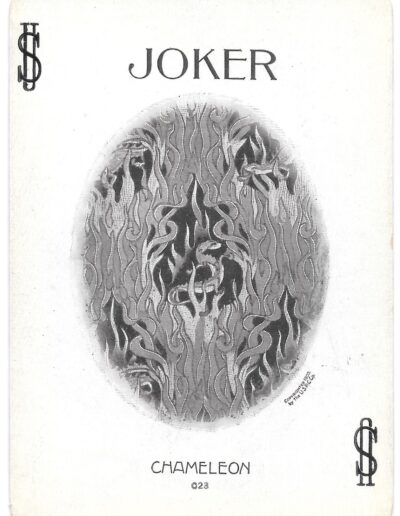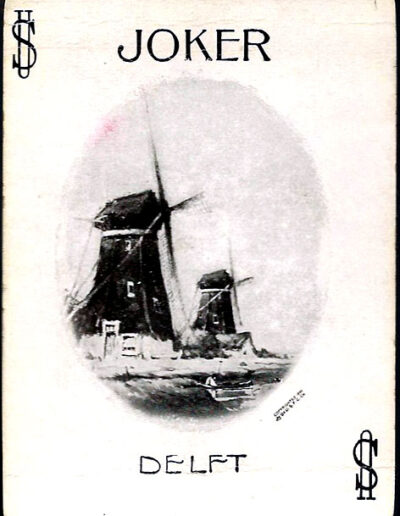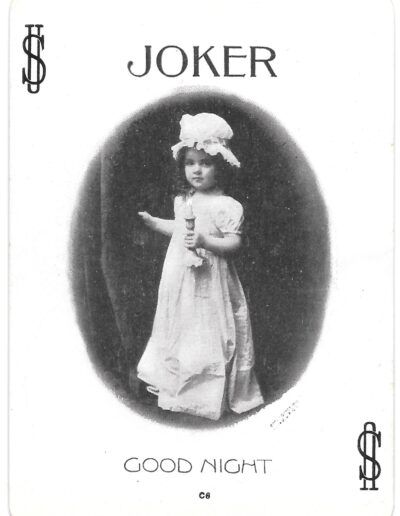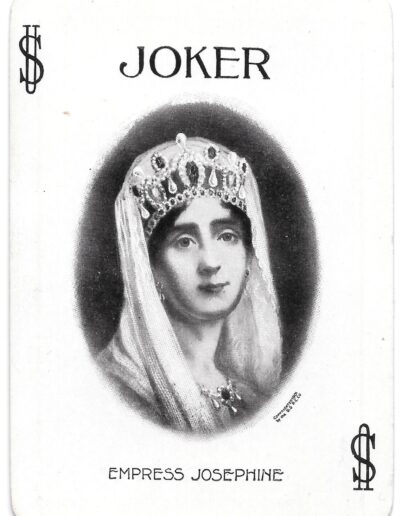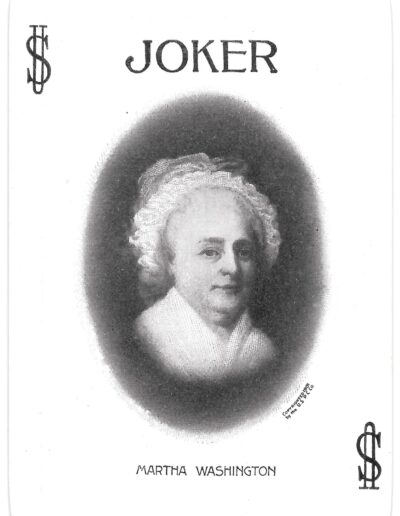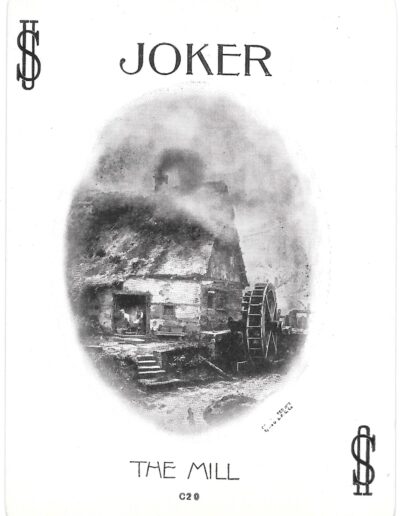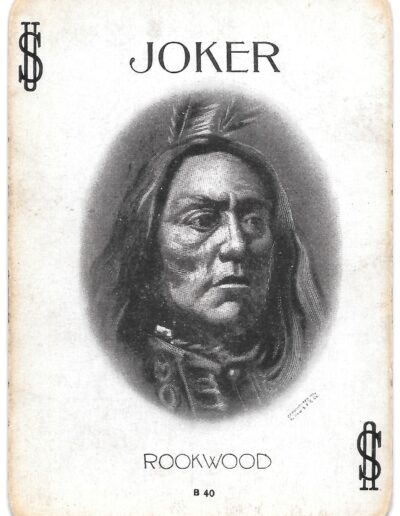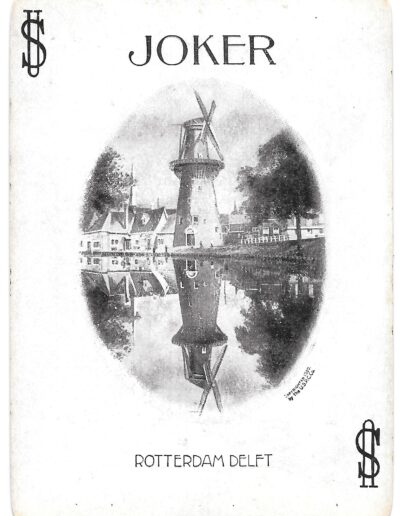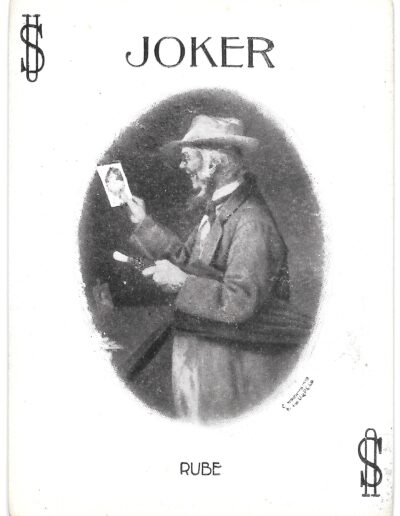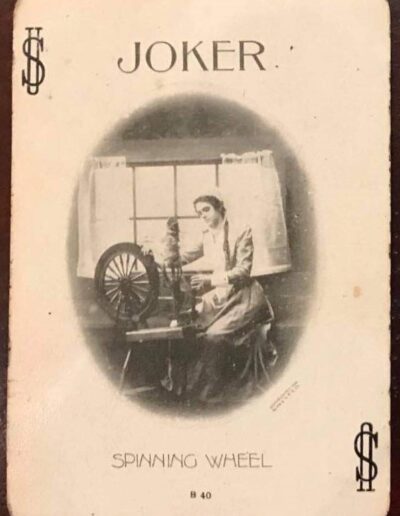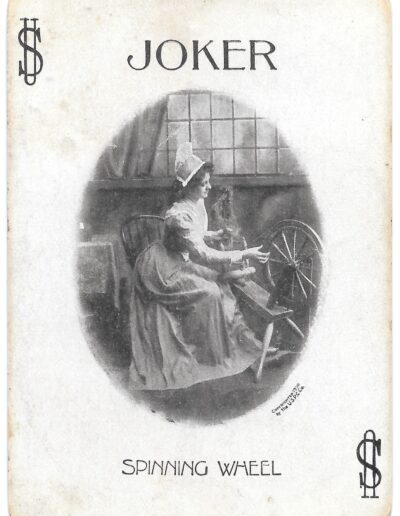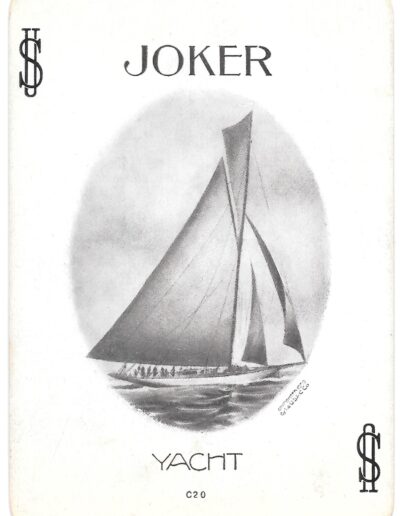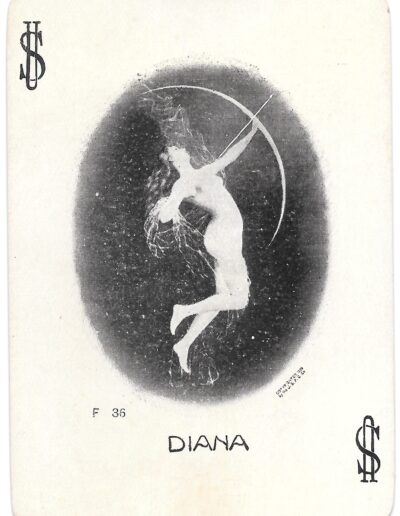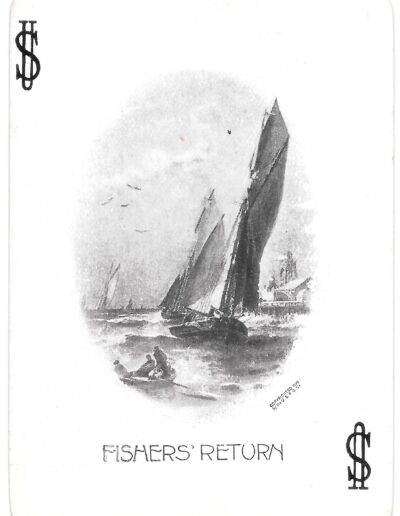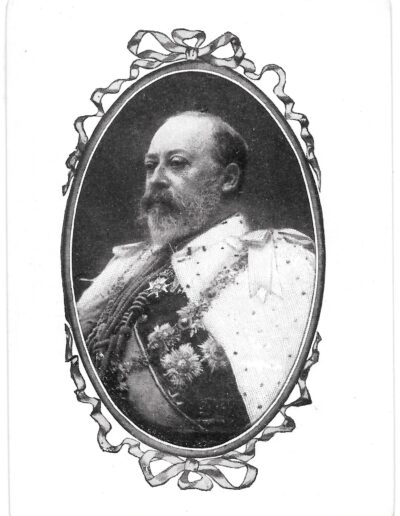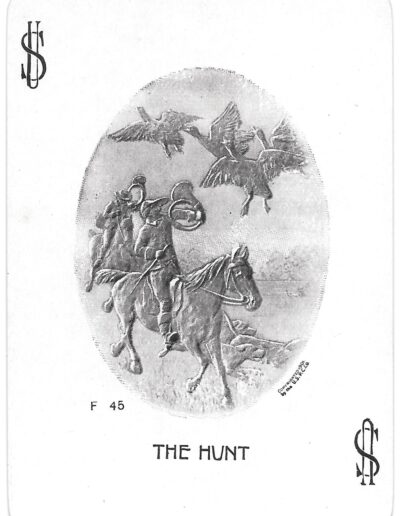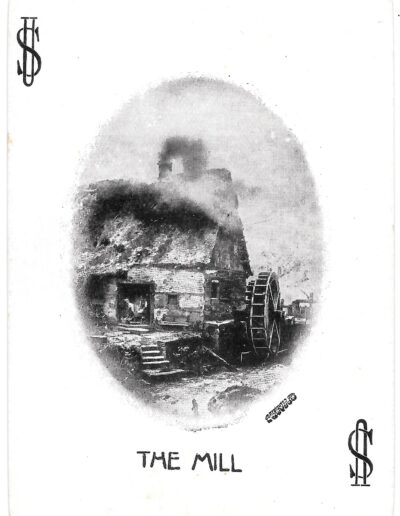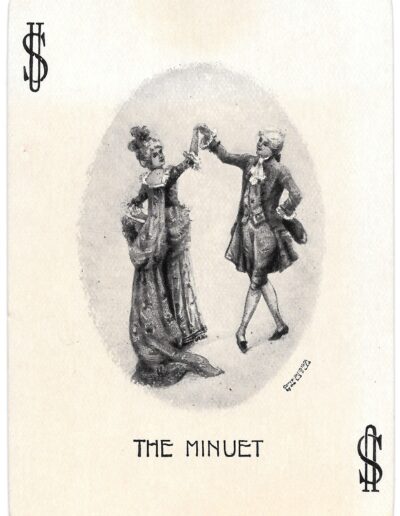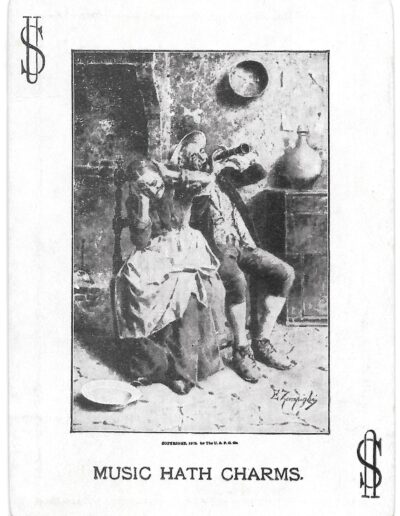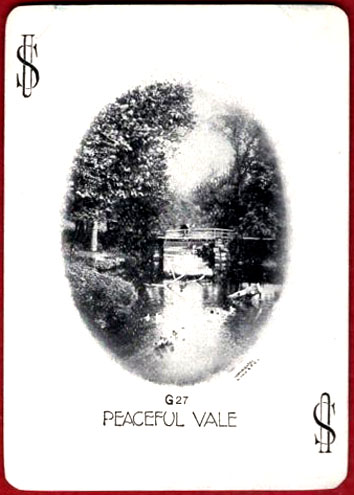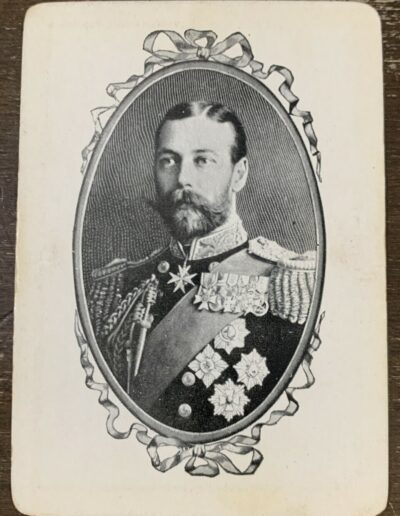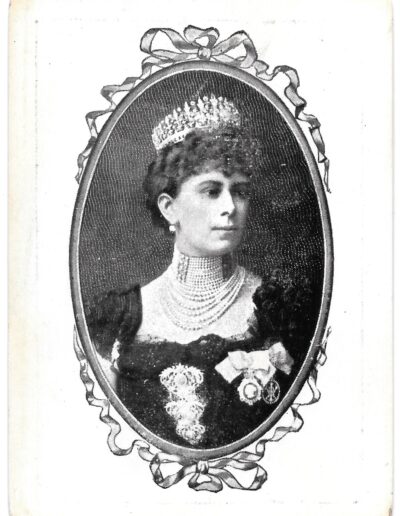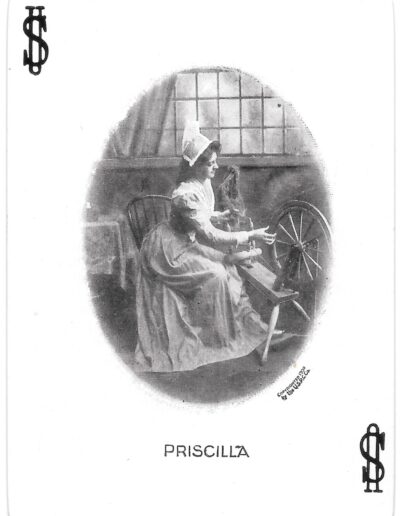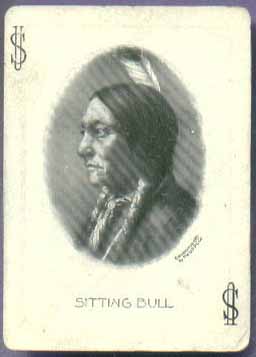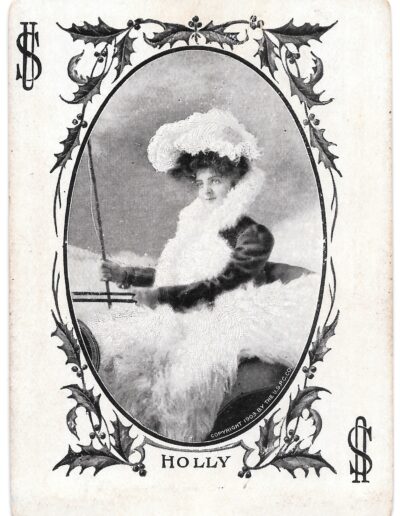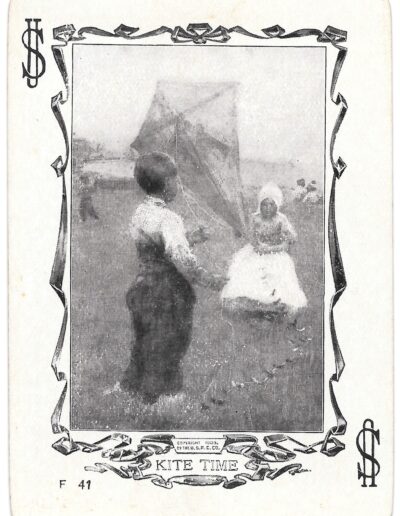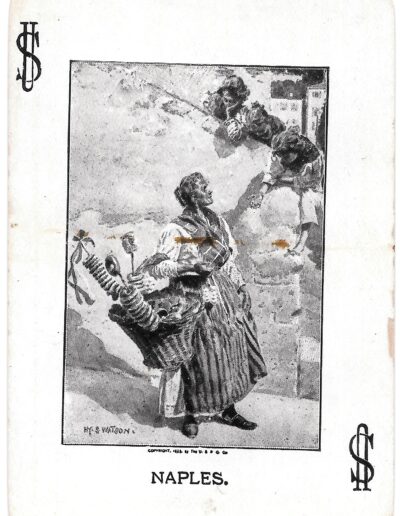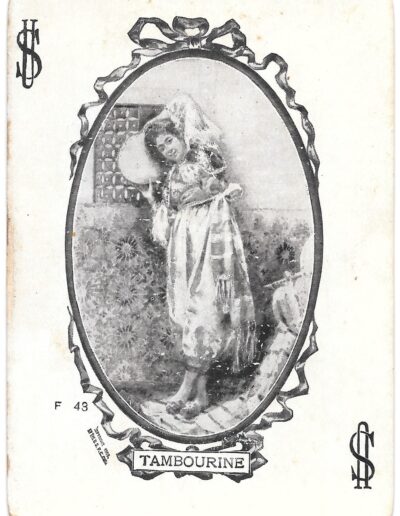Matching Jokers (1899-1904)
When people think of the joker, the images that typically come to mind are a jester, or a king on a bicycle. But during an approximate 6 year span, the Congress line of playing cards did something a little different. They used a black and white image of the back design as the joker. Collectors today call them “named”, or “matching” jokers.
TRANSITIONING FROM AN ICON
From 1881 until the mid to late 1890s, the Congress joker was Lord Dundreary, played by actor E.A. Sothern, the popular character from “Our American Cousin”. He died in 1881, at the same time Russell and Morgan started making playing cards, as he appeared on the joker of the lacquer-back designs from 1881 until the late 1890s. In 1899, when The United States Playing Card Company moved its factory from downtown Cincinnati to Norwood, Ohio (maybe by coincidence), Congress cards switched to pictorial backs (and never looked back).
VERSION 1 (ca.1899-1901)
In 1899, with the introduction of the new pictorial series, we see the joker change as well. Lacquer backs were in their final years, and backs like Starlight, Web, and Dragon, to name a few, were seen with these new matching jokers. Through my research, the US6c Ace’s accompanying joker had a borderless oval image, and the word JOKER in the top-center of the card. The name of the back was at the bottom-center. “US”, resembling a dollar sign, was at the top left and bottom right corners. Many popular decks had these first-version matching jokers, such as Berenice, Yacht, Rookwood, Sitting Bull, etc. These decks had the US6c Ace up until 1901. Below are examples of these first-version jokers.
Click on an image to enlarge
VERSION 2 (1901-1902)
In 2019, I wrote an article about a “Priscilla” deck that I had purchased with a hand written note affixed to the inner sleeve of the box (CTD, June 2019). Well about a year went by and I noticed that this matching joker was missing something. The word JOKER was missing at the top. Over the next several months I acquired more decks with matching jokers. And that’s when I noticed these second-version jokers all had the US6e Ace. This ace was used from 1901 to 1904 based on my research, and that’s about the same time the paper wrappers were discontinued and glassine wrappers came into play. Some decks you’ll find with the US6e are Rube, The Hunt, Priscilla, etc. Below are examples of second version jokers.
VERSION 3 (1903-1904)
In 1903, Congress switched it up again and now square borders came into being on decks like Kaatje as well as fancy borders around the standard oval with decks like Moorish, and holiday decor bordered the 1903 “Holiday Series” of Holly, Toboggan, and Mistletoe. In 1904, the new back designs thaat were released started using “Capitol” jokers, while a few decks like “Anticipation”, retained their matching jokers and didn’t adopt the Capitol joker until the following year, when the ace changed as well.


